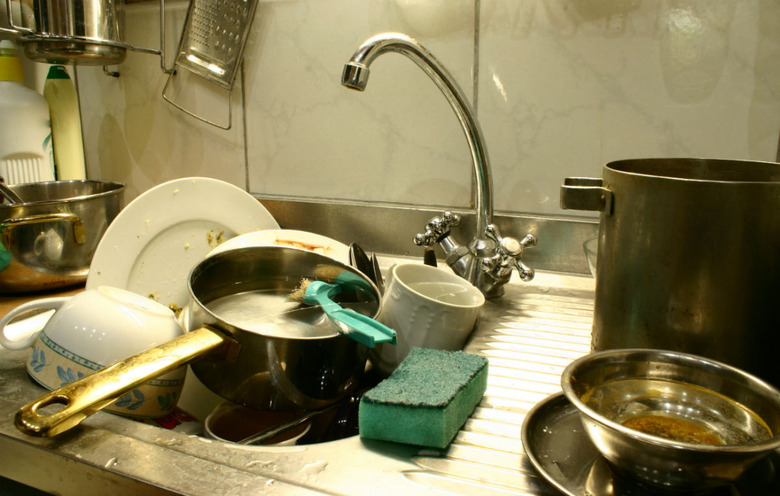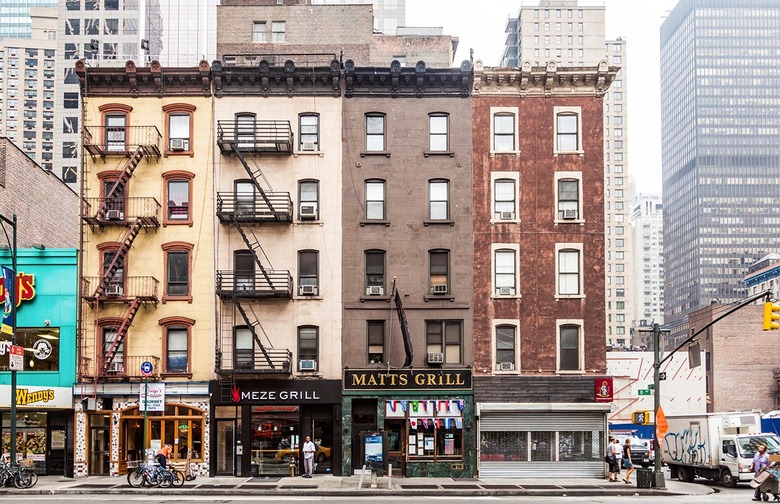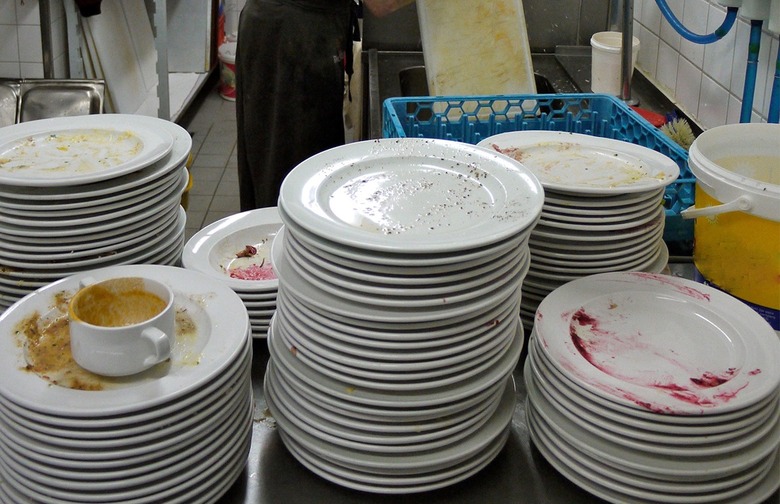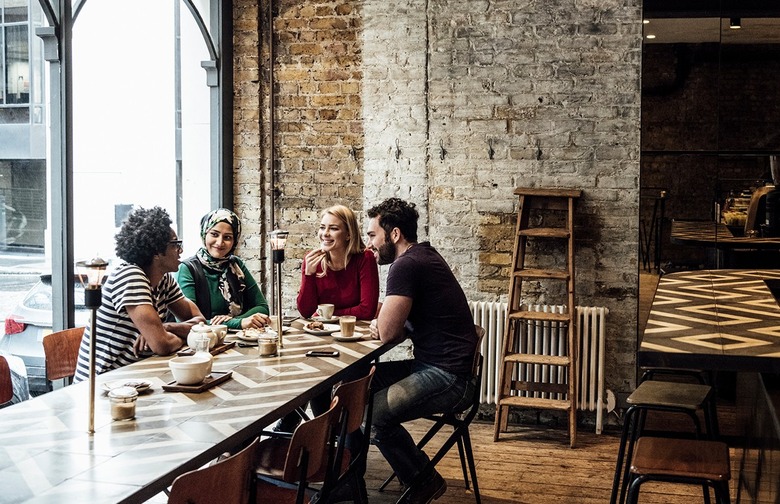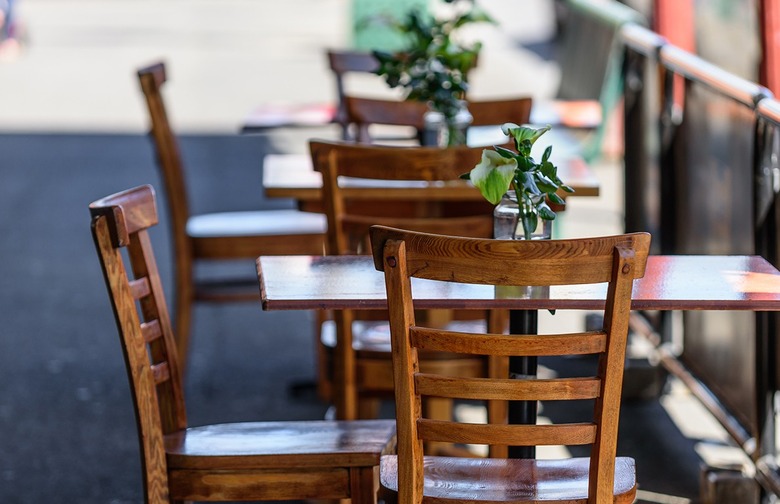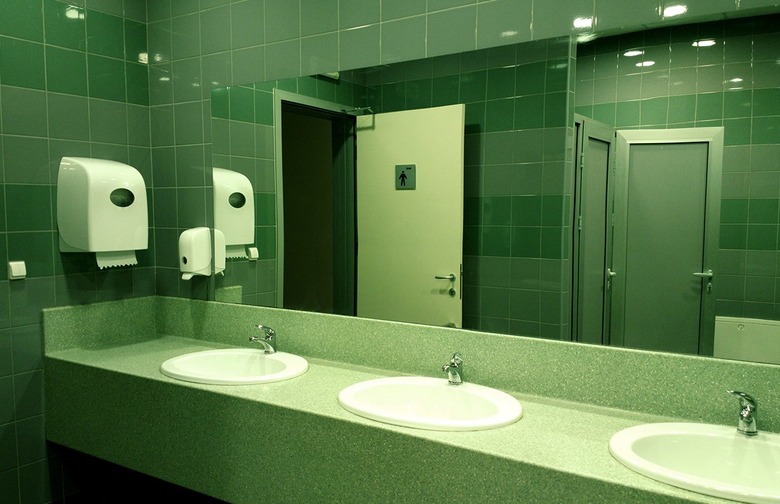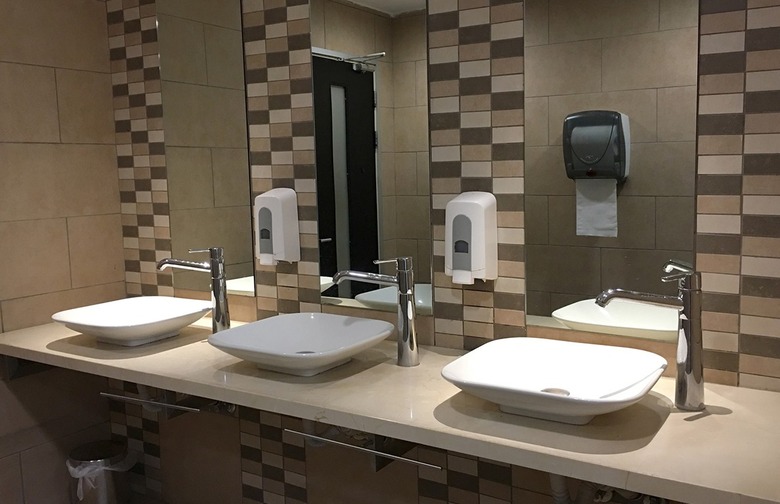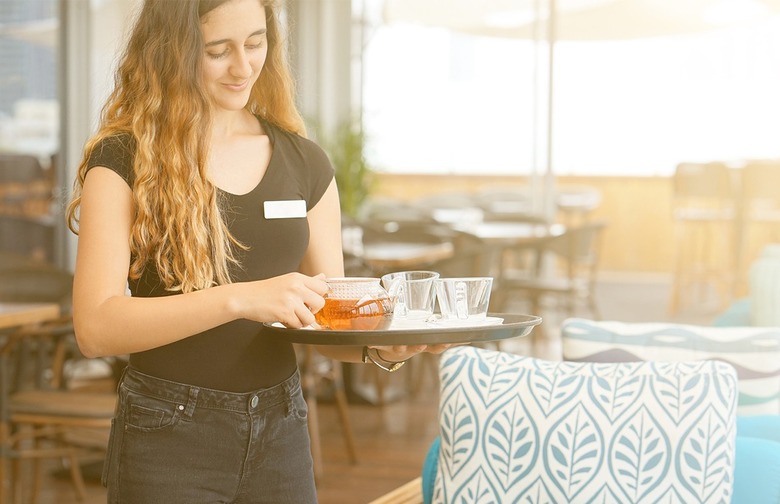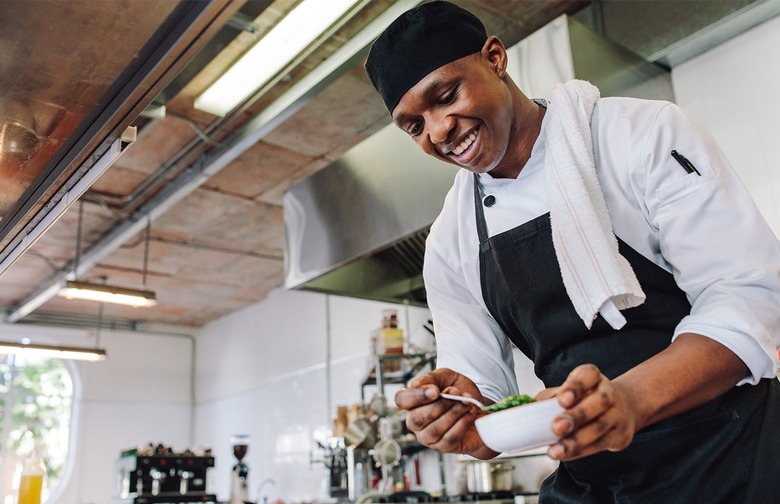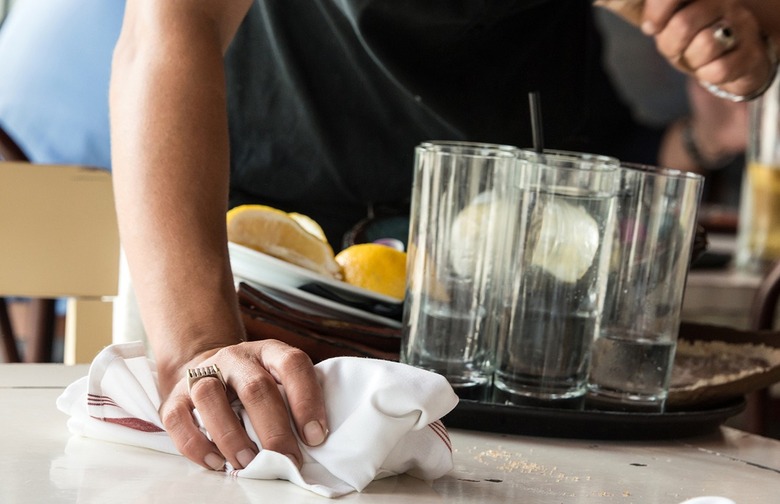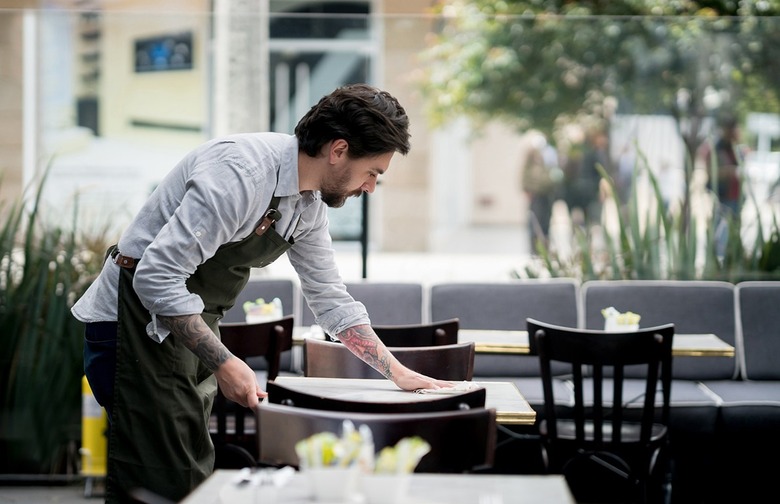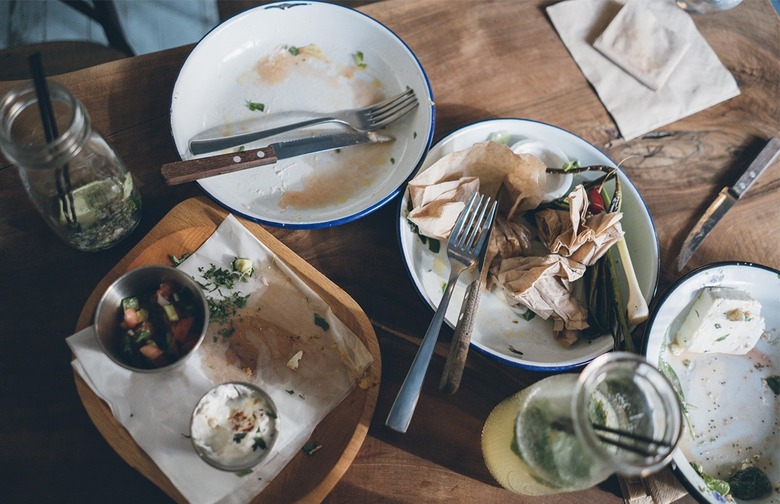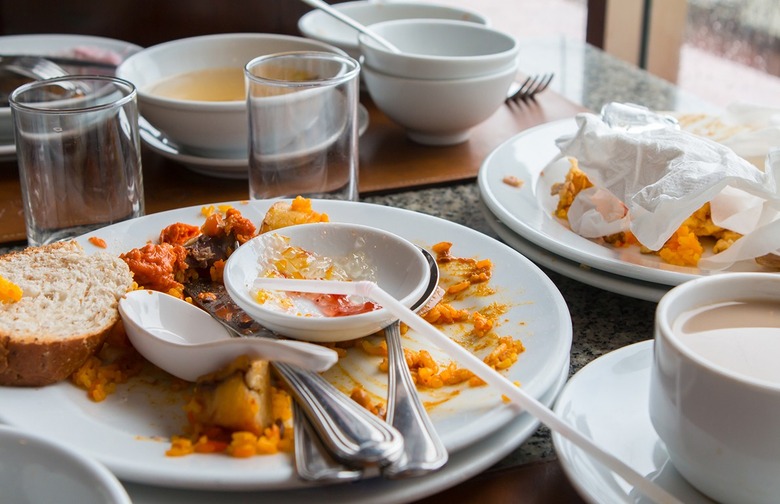17 Signs You're In A Dirty Restaurant
Nobody wants to eat a meal in a dirty, grungy restaurant. Sure, greasy spoons and holes-in-the-wall may have a certain charm to them, but once they veer into "public health hazard" territory all bets are off. That's why we're helping you identify some obvious (and some not-so-obvious) ways to tell if you're in a dirty restaurant.
It may seem like a no-brainer: Just take a look around, and if the restaurant is gross, then you'll know it. But in reality, it may not be immediately apparent if a restaurant is poorly maintained, and there are some major red flags that might not be among the first things you notice. And if you're wondering why you should care if a restaurant's floor could use a sweeping, an oversight like that might mean that there's also a lack of cleanliness in the kitchen or carelessness when it comes to keeping uncooked food at the proper temperature, which might result in a serious bout of foodborne illness.
If you have any doubt whatsoever about the cleanliness of a restaurant or its kitchen, the best thing you can do is leave. So read on to learn 17 ways to identify if the restaurant you're in is a dirty one.
The exterior isn’t well-maintained
When you arrive at the restaurant, take a look around before you even walk through the door. Are the dumpsters overflowing? Is trash strewn about the parking lot? Is the awning or sign filthy and falling down? Could the whole place use a paint job? If the answer to any of these questions is yes, you might want to reconsider eating there.
It smells
When you set foot inside a restaurant, take a sniff. Does it smell like garbage, grease, or anything unpleasant? If so, leave.
It has a bad health department rating
Some cities make restaurants display health department scores on their front windows, and others make them public via an online database. Make sure you check these scores before committing to dining somewhere; if they don't have a high rating there's a chance eating there might make you sick.
The menus are dirty
Making sure that the menus are in good condition is a pretty basic task, and if they're stained, sticky, or in otherwise bad shape, that's not a good sign. Hundreds of people have held that same menu, and if they're not cleaned (or replaced, in the case of paper menus) on a very regular basis, that means that you're picking up germs from anyone else who's touched it.
The floor and walls are dirty
Are there streaks of sauce on the walls? Are the corners of the floors caked with dirt? Do your shoes stick to the floor a little as you walk around? If those aren't signs of a dirty restaurant, we don't know what is.
Anything is sticky
Is your table, menu, seat, or condiments sticky? Well, they can't be both clean and sticky at the same time!
The bathrooms are gross
A dirty bathroom is the best indicator — short of inspecting the kitchen — that a restaurant isn't safe to eat at. If the toilets are gross, the garbage overflowing, the toilet paper or paper towels running low, the sink and mirror covered in grime, and the floor a mess, that's a really good sign that this lack of attention to detail also extends into the kitchen. Just think: If a place that's open to the public is so gross, just imagine what it looks like behind the scenes!
There’s no soap in the soap dispenser
We recently warned that if you notice this one thing in a restaurant, you should leave immediately. In many restaurants, the dining room restroom is the only one on the premises; not many have space in the kitchen for a staff-only restroom. (That's why nearly all restaurant bathrooms have signs telling employees to wash their hands before returning to work.) So if there's no soap in the soap dispenser, the odds are pretty good that the folks who are about to prepare your food haven't thoroughly washed their hands.
The server is unkempt
If your server looks like a hobo, that's indicative of a lack of oversight on the part of management and a lack of caring on the part of the server. We're not talking about tattoos and piercings here (those are fine) — we're talking about personal hygiene.
The server is sick
If your server is sneezing and blowing their nose, or clearly appears to be under the weather, you're completely within your rights to either request a different server or just up and leave.
You find a hair — or worse — in your food
Cooks are supposed to take great pains to make sure that their hair doesn't find its way into your food — they're supposed to wear hairnets, and many restaurants provide beard nets as well. So if you find a hair in your food, that means that there's an issue with cleanliness in the kitchen. And if you find a fly in your soup, that's a major red flag there as well. If you find anything in your food that's not supposed to be there, send it back immediately and make sure you get a refund.
Kitchen workers aren’t washing their hands
It may be tough to tell, but if you have the opportunity to sneak a peek into the kitchen, check to make sure that the cooks are wearing gloves when handling ready-to-eat food, and are washing their hands. And if you happen to be in the restroom at the same time as a kitchen worker, keep an eye on whether they wash their hands or not. It's a sure sign that they're taking basic steps to make sure that you don't get sick, and in many states, it's the law.
Tables are cleaned with a dirty rag
Take a look at the way tables are cleaned between diners. If the cleaning process involves moving the gunk on the table around with a wet rag, that's a good indicator that those tables are going to be a bacterial minefield. Lots of restaurants don't clean their tables properly (with a proper disinfectant and a clean towel) so a good rule of thumb is to treat any food that touches the table the same as you would if it fell onto the floor: Don't eat it.
Tables aren’t properly bussed
Bussing a table involves more than removing the dirty dishes and wiping the table down. Have the dirty dishes been left festering on the empty table for a long time? Is the floor around the table also being cleared of dropped food and empty sugar packets? Are the seats and condiments being wiped down? These are also things worth paying attention to.
There’s a lipstick stain on the glassware
Make sure you inspect your glassware before you drink out of it, not just for lipstick marks but also for fingerprints from where the glass may have been held from the top. Hundreds, if not thousands, of other people have put their lips on that glass, and it's absolutely crucial that it's thoroughly cleaned before you do the same. We know that straws are in the doghouse right now, but you're much better off (from a hygiene standpoint) drinking through a straw than drinking right from the glass. Unless it's wine or beer — then it's a little weird.
Plates and silverware aren’t properly cleaned
Take a look at your silverware before you eat off of it, and when your plate of food arrives, make sure that it doesn't have any remnants of its previous meal crusted onto it. Every restaurant sends out a dirty fork every so often (even industrial dishwashers aren't perfect), but the fact that it wasn't discovered beforehand can be a sign of carelessness.
Flies are buzzing around
If you're swatting flies away while trying to eat your meal, that means that the cooks are doing the same while trying to prepare it. Fly infestations are indicative of a larger hygiene problem and it's something that high-end restaurants take very seriously, which is why diners tend to not find foreign objects in their food at the very best restaurants in America.
More From The Daily Meal:
Tips for Avoiding Food Poisoning
The 20 Rudest Things You Can Do in a Restaurant
The Most Romantic Restaurant in Every State
